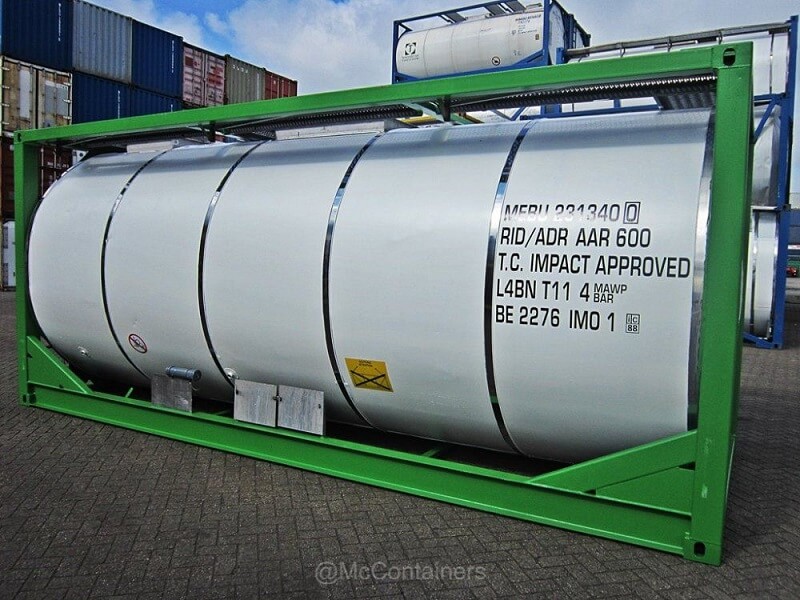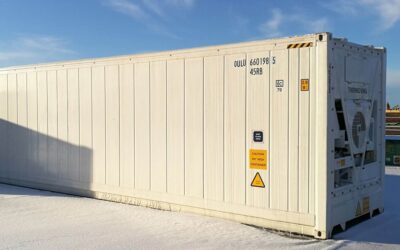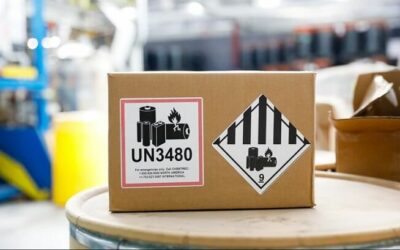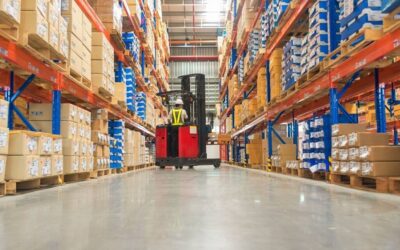Tank Container & ISO Tank Container – The Ultimate Guide
Tank containers are barrel-shaped vessels serving multi-purposes and use for the bulk transportation of the following materials
- Fluids
- Gases
- Powders
A tank container is suitable for transportation of materials whether they are hazardous and non-hazardous.
Table of Contents
Construction:
It is made up of stainless steel covered and insulated with a layer of either polyurethane or aluminium.
Tanks made of stainless steel typically have better usage, i.e., approximately two years of shipping corrosive materials than those made of aluminium.
Types and Sizes:
For convenient, quick and secure handling of the material, all the containers have the same sizes, with precisely stable frame-structure around them and common links for the handling devices to connect properly.
There is a wide range of tank containers. The type and other adjustments, including valves loading fittings and heating system depend on what they need to be used for.
Different fitments, such as valves stacking fittings and warming frameworks, vary as per the end client’s prerequisites.
What are the types of Tank Containers?
Various tank containers are depending on the usage. These tanks have various applications which are explained in the table below:
| Container Type | Usage |
| Fuel tank | For transporting gases. |
| Storehouse tank | To ship grains and powders |
| Reefer tank | This has the capacity to cool the item to be shipped |
| Food-grade tank | It is a standard tank container which can only ship food items |
| Swap body tank | Swap body tank normally has a bigger cubic limit than standard ISO containers making them ideal for moving extremely lightweight cargoes. |
| Baffle Tanks | Warming frameworks including steam, warm water and thermostatically controlled electrical warming or cooling can be included in this tank container. |
| Lined Tanks | They are intended for the transport of both pure or exceptionally destructive items. This sort of tank is lined and have extra security frameworks. |
| Heated Tanks | To ship items that must be kept hot or warm during the transport. |
What is the Average Cost of Every Type of Tank Container?
All businesses need to invest carefully to prevent any kind of loss. As the new containers cost a lot, people usually go for used containers. Below is a comparison between the price of a new and a used tank container in a tabular form.
| | Cost of New Container | Cost of Used Container |
| 20-foot tank container | £9,100.00 | £6,200.00 |
| 40-foot tank container | £10,500.00 | £7,000.00 |
Also Read
| Open Top Container | Hard Top Container |
| Platform Container | Insulated Shipping |
| Flat Rack Container | Pallet Wide Containers |
| Intermediate Bulk Container | Reefer Container |
| Ventilated Container | Dry Container |
Uses of Tank Container
A tank container is used for the storage or bulk transportation of liquids, chemicals or food items including:
- Groceries
- Wines and Spirits
- Organic product juices
- Sweet Oils
- Synthetics
- Fills
- Harmful substances
- Gases
The items to be transported are labelled under IMO. IMO types refer to the grouping for dangerous goods. The tank containers can be used to ship the items of the following classes.
| IMO Type | Class | Flashpoint of materials | Type of materials | Tank type |
| IMO Type 1 | 1,3-9 | Under 0°C | explosives, combustible fluids, destructive and harmful substances. | Hazardous Tanks |
| IMO Type 2 | 3 | 0 – 61°C | flammable fluids incorporate diesel and cooking oils. | Low Hazardous Tanks |
| IMO Type 5 | 2 | | non-refrigerated condensed gases | Gas Tanks |
For reference, IMO represents the International Maritime Dangerous Goods Code.
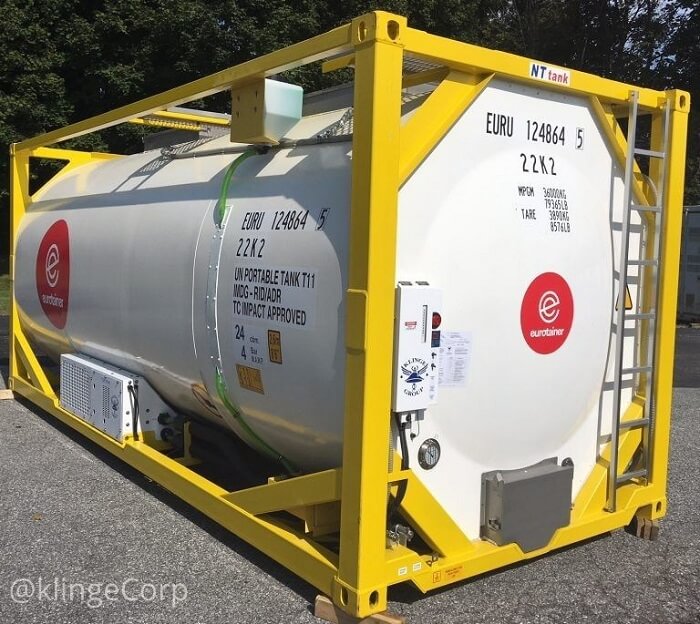
Why Go for Tank Container?
They have multiple benefits and are
- More productive than utilizing more small drums.
- simple to ship
- simple and brisk load and unload load through rooftop lids and valves.
Using a Tank Container disposes of the dangers in relocating or moving liquids from one vessel onto the next. This gives a financially savvy, secure and very protected suitable method of shipment.
After shipping, the tank container is moved to a cleaning terminal preparing it for the next cargo.
ISO Tank Container
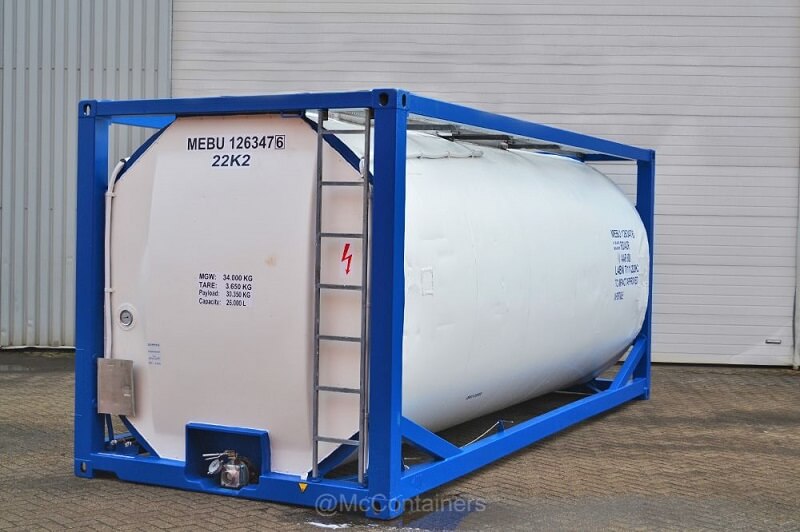
ISO tanks are cost-effective as they can place and effectively transport less than shipload or truckload materials with much less shipping and handling cost. They can generally be stacked in 90mins whereas drums require a few hours.
Moreover, the freight can be easily carried by truck to the railroad, from the train to transport deck and ISO tanks can also be shipped via air.
Like other container types, ISO tanks can also be stacked. Railcars permit two ISO tanks to be shipped on the well with two more tanks loaded on top. This technique allows thousands of gallons of liquid to be shipped in much less time.
The ISO tank can accommodate around 4 thousand gallons much more than the previous standard-sized methods involving an IBC tank that could only place at around 3 thousand gallons each or 55-gallon drums.
Types and sizes:
All ISO holders require to adjust to guidelines, for example, size, strength, and reliability. ISO tank containers have dimensions and features set according to the principles of the International Organization for Standardization.
The ISO Tank Container permits the shipping of a wide range of items. From edible fluids and non-hazardous liquids to shipping dangerous materials including erosive and explosive materials, toxins, and flammables.
What is the average cost of ISO Tank container?
You can buy an ISO Tank container for U$11,000.00, however, if worked beneficially for an additional 12 years, can cost you under US$1000.00/annum.
Types of ISO Tank Containers:
UN assigned the items that are appropriate for transportation inside a tank container with an extra ‘T’ code in the table, and this shows the sort of tank that should be utilized for shipping it.
Based on the usage, the following are the types of ISO Tank containers.
| Container Type | Usage |
| Rubber lined ISO tank | To ship corrosive based synthetic compounds |
| T1 ISO tank | For shipping wine and light fluids |
| T4 ISO tank | To transport non-perilous eatable and non-consumable oils |
| T11 ISO tank | To ship non-dangerous synthetics |
| T14 ISO tank holder | To ship dangerous synthetics and acids like HCl and zinc chloride |
| T50 ISO tank | To transport LPG and alkali gas |
| T75 ISO tank | For moving Cryogenic fluids |
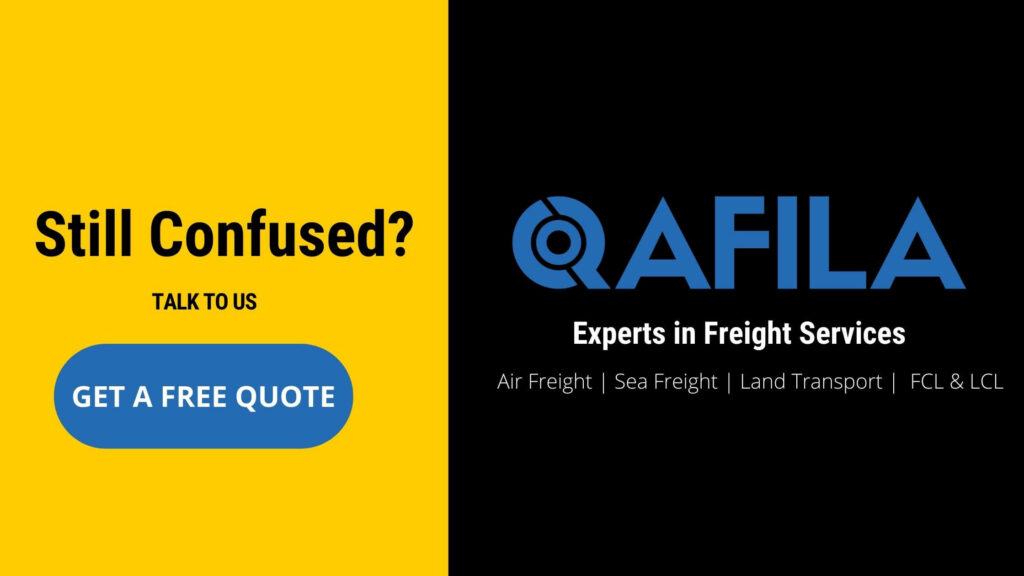
How Can use ISO tank Container to manage our cargo effectively?
These tank containers are tough. Pressure load tests are played out each time a container is unloaded. As the ISO tank containers ship all types of hazardous or non-hazardous materials, they need to be certified and examined.
How to load materials?
You can load and unload a tank container from the top and the base by connecting the hoses to the valves. There are a vent and one valve on the top of a standard tank vessel, and there is a valve at the base.
The ISO frame makes these tank containers dispatched with intermodular delivery choices that incorporate container ships, rail lines and trucks.
Effective use ISO Tanks
All in all, tank containers, at any rate, should always be 80% full, to prevent dangerous flooding of fluids during the transit. You can’t fill them more than 95%; otherwise, there will be no space to consider thermal expansion.
They can transport a number of hazardous and non-hazardous materials, including:
- Molasses
- Milk and other dairy items
- Alcoholic and Non-Alcoholic Beverages
- Condensed sugars
- Hydrogen Peroxide
- Sulfur Acid/Nitric Acid
- Synthetic compounds/Solvents
- Fluid Food Products
- Warming oil/Vegetable oils
- Gas/Diesel/Liquefied petrol gas
Dimensions of Tank and ISO Tank Containers:
Around 95% of tank containers have 20ft dimensions despite the fact that they come in other sizes, including 10ft, 30ft, 40ft, and 45ft containers.
Standard ISO Tank Container Specifications
| Capacity | Gross Weight | Tare Weight | Payload | Steam Heating Coil | Max. Cargo Temp. | Test Pressure | Working Pressure |
| 21,000L | 36,000kg | 3,650kg | 32,350kg | 8m² | 120°C | 6.00 BAR | 4.00 BAR |
| 24,000L | 36,000kg | 3.900kg | 32,100kg | 8m² | 120°C | 6.00 BAR | 4.00 BAR |
| 25,000L | 36,000kg | 3,730kg | 32,270kg | 8m² | 130°C | 6.00 BAR | 4.00 BAR |
| 26,000L | 36,000kg | 4,060kg | 31,940kg | 8m² | 130°C | 6.00 BAR | 4.00 BAR |
20ft Standard Container
Dimensions
| Length | Width | Height | Door Width | Door Height |
| 6.058 m | 2.438 m | 2.59 m | 0.000 m | 0.000 m |
Specifications
| Tare Weight | Max. Cargo Weight | Max. Payload Weight |
| 4190 Kgs | 30,480kgs | 26, 290 kg |
40ft. tank Container
Dimensions
| Length | Width | Height | Door Width | Door Height |
| 12.192m | 2.438 m | 2.62 m | 0.000 m | 0.000 m |
Specifications
| Tare Weight | Max. Cargo Weight | Max. Payload Weight |
| 11,800 Kgs | 36,000kgs | 22, 200 kg |
45ft. tank Container
Dimensions:
| Length | Width | Height | Door Width | Door Height |
| 13.716m | 2.438 m | 2.62 m | 0.000 m | 0.000 m |
Specifications
| Tare Weight | Volume L | Max. Payload Weight |
| 16,370 Kgs | 54,120 L | 19,630kg |
